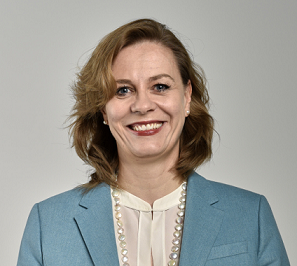A year ago, it seemed that the world closed around us. From one day to the next, travel and movement became restricted. The usual in-person exchanges with colleagues from across the world suddenly became a rare occurrence. Yet, while the pandemic may have changed how we interact, it has also highlighted the inherently global nature of our discipline and of research generally. Excellence in science is driven by inclusive interaction, by bringing together diverse ideas and input from all corners of our globe.
As we look ahead to the future of CERN, this global dimension takes on added importance. An ambitious future for the Laboratory and for the field is only possible through a global effort, with our Member and Associate Members at the heart of it.
Five years ago, the International Relations Sector was established with the task of enabling CERN to accelerate science and serve society on a global level, now and for the future. This mission is even more relevant now, five years on, as we focus on support for the implementation of the recommendations of the 2020 update of the European Strategy for Particle Physics. There is an international dimension across all of the 20 statements of the Strategy. Our task in IR is to facilitate that international dimension, generating understanding and building support for the scientific aspirations encapsulated in the Strategy.
Reaching out, making CERN visible and making its impact understood, is critical to sustaining long-term support. This requires engagement in our Member and Associate Member States, and beyond. For the IR sector, whose core business involves engaging with people either on-site or further afield, it seemed for a while as if everything would grind to a halt in 2020. “La visite est annulée” became almost a mantra, until our fantastic teams learned how to move on-line with virtual talks and visits tailored for VIPs, schools, the media and the general public. These will continue, and as we hopefully move back towards normality, they will enhance our work going forward.
The CERN Science Gateway, our new education and outreach centre, will be pivotal in our efforts to enhance the engagement for CERN’s future. Construction got underway towards the end of last year and is now very visible around the Globe of Science and Innovation and next to entrance A. In parallel, work is ongoing to develop new exhibitions, along with educational and outreach programmes ready for the opening in 2022/23. This year’s Sparks! event is an important precursor in this respect. The new materials, joint events through the auditorium, temporary exhibitions at the Globe and more capacity to welcome visitors will all serve to strengthen the link between CERN and our Member and Associate Member States.
The next five years are important ones for all of the CERN community in a global perspective. The top priority remains, of course, the physics – excellent science that thrives on interaction on a worldwide scale. With the experience of the first five years, the IR sector will be working hard over the coming mandate to ensure that the vision and impact of the Laboratory are shared, understood and owned by all of our stakeholders. As we emerge from the pandemic, we want to look forward to a bright and even more greatly integrated future for our field.

